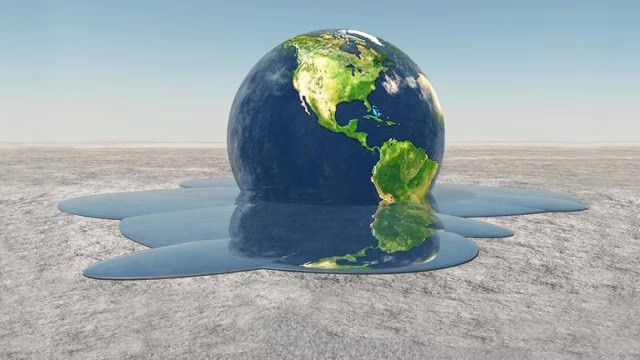Climate Risk Index 2026: Overheating, pouring rains, raging fires, fatal floods and devastating hurricanes, events, which once were rare and accidental occurrences, have become the new reality in a world rapidly becoming warmer.
As the year 2026 will be the hottest in history, the latest Climate Risk Index 2026 of Germanwatch has brought an insight into how the increasing severity of extreme weather is transforming life and economy all over the world.
There were over 9,700 and 832,000 lives and direct economic losses of approximately USD 4.5 trillion (inflation-adjusted), respectively, the report is claiming between 1995 and 2024.
The nations which were most influenced in the period of 30 years were Dominica, Myanmar, and Honduras.
Dominica has been hit severally by huge hurricanes.
Honduras is one of the poorest countries of the Western Hemisphere, which is also quite vulnerable to hurricanes, tropical storms, floods, droughts, and landslides.
In 2024, Myanmar was the most affected country by Typhoon Tyagi as it was susceptible to cyclones and floods along with my country at position 9 in 2024 and 2 in the overall 1995-2024 period.
Top 10 countries most affected by extreme weather (1995–2024):
Climate Risk Index: Top 10 Most Affected Countries
China ranked No. 11, Pakistan No. 15, and the United States No. 18; find full rankings below.

Source: German Watch’s Climate Risk Index 2026
Where does India stand?
The country received a better annual ranking, as it sparked less significant disaster events and increasingly gradual progress in resilience, dropping to No. 15 in 2024, compared to the previous No. 10 of the country, India, in 2023.

But in the more extended outlook (1995-2024), India has ranked as one of the most hit countries due to the effects of climate-related disasters – an approximate of 80,000 deaths, or 9.6 percent of the worldwide rates, attributed to extreme weather conditions.
The report says that India experienced over 430 climatic catastrophes such as droughts, cyclones, heat waves and floods over the last thirty years, with the estimated losses of USD 170 billion.
The report indicated that large scale high fatality and/or economic damages events include the 1998 Gujarat and 1999 Odisha cyclones, Cyclones Hudhud (2014) and Amphan (2020), the 1993 Northern India floods, the 2013 Uttarakhand floods, and the 2019 devastating floods.
It also pointed out that frequent and abnormally hot heatwaves, in excess of 50 deg C has taken a toll on numerous lives in 1998, 2002, 2003 and 2015.
There are floods and landslides that are caused through heavy monsoons hence they have been causing havoc. The pattern used is seen in the 2013 Uttarakhand floods, 2019 monsoon floods and recurrent deluges in Assam and Kerala. In the meantime the heat waves that have reached temperatures close to 50degC, as witnessed in Gujarat, Rajasthan and Uttar Pradesh, have been becoming more frequent and extended. The effects of cyclones like Amphan (2020), Fani (2019) and Hudhud (2014), which affected the weak coastal settlements, were enormous in terms of human and economic damages.
The situation is exacerbated by countries like India, Haiti and the Philippines, which are struck by a flood, heat waves or storms almost frequently such that the whole region can barely recuperate before another attack strikes, said Vera Kunzel, the senior advisor on climate adaptation, human rights, at Germanwatch. They have insurmountable difficulties without additional support and adaptation finances in the long term.

To discover that extreme weather has already taken over 832,000 lives in the world and inflicted more than 4.5 trillion economic damages on the global economy in a 30-year period, the CRI 2026 demonstrates. Monetary loss was most severely experienced with storms at 58 per cent of total loss, floods experienced almost half of all the victims but heat waves and storms at two-thirds of all deaths.
The fact that India is in the list of top 10 countries shows the weight of the effects of climate borne by the Global South even though it is the one that contributes the least to the global emissions. Of the top ten countries most affected, six are the lower-middle countries. The rest of the top 10 list incorporate Dominica, Myanmar, Honduras, Libya, Haiti, Grenada, the Philippines, Nicaragua and the Bahamas. Dominica is the number one, it has experienced devastating economic costs which are several times her GDP due to frequent hurricanes especially the Hurricane Maria in 2017.
In the year 2024 alone, the Caribbean states of St. Vincent and the Grenadines and Grenada ranked first and second respectively following the damages created by Hurricane Beryl which had speeds of up to 260 km/h. The third one is Chad, which had experienced months of floods that displaced a population of two million people.
It is in this context of increasingly dangerous climatic conditions that developing nation countries rejoiced in a breakthrough published at COP30 the introduction of the first call for proposals under the Funding of Responding to Loss and Damage (FRLD). This is the first time such an opportunity has existed since the inception of the fund at COP27, that is, climate-vulnerable nations can access direct financial aid to restructure and restore infrastructures, livelihoods, and deal with irreversible losses caused by climate.
Approximately 250 million dollars was announced as the sum that can be received by the developing countries as the first round, the FRLD board encourages the submissions of proposals within the period of mid-december 2025 through 2026. At the start of the second half of the next year, approvals of the first set of projects should start.
Evans Njewa, who is a chair of the Least Developed Countries Group of the UN climate talks, said; This is a practical action to justice, long due to the communities at the frontline. The fund should now provide quick, easy and convenient services.
For more updates follow: Latest News on NEWZZY
